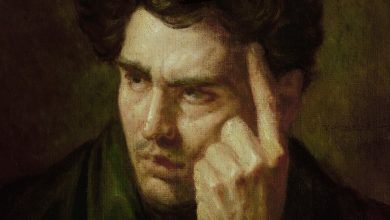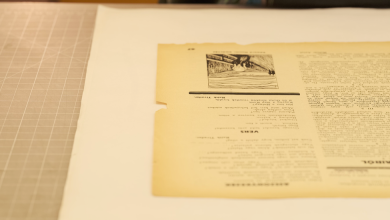The Democrats’ Historic Successes and Contemporary Failures

WHAT IT TOOK TO WIN
A History of the Democratic Party
By Michael Kazin
LEFT BEHIND
The Democrats’ Failed Attempt to Solve Inequality
By Lily Geismer
The Democrats have always been the party of working people, but for most of their existence they were really the party of working white men. Not until the 1960s did Democrats expand their mission decisively beyond what contemporary historians have called “egalitarian whiteness,” and not until the 1970s did they fully commit themselves to women’s rights.
This course correction, when it finally happened, made the party home to the majority of women voters and the overwhelming majority of Black voters. But it also prompted white flight. Before 1948, no Democrat entered the White House without winning a majority of the white vote. After 1964, no Democrat entered the White House without losing it. Democratic losses were especially heavy among the group whose interests once defined the party: the white male working class.
The practical and moral challenges of repatriating this diaspora animate important books by two historians. “What It Took to Win,” by Michael Kazin, takes the story back to the party’s origins two centuries ago. “Left Behind,” by Lily Geismer, picks up the narrative in the 1990s. Both authors conclude that the glue necessary to put Humpty Dumpty together again is the labor movement.
Kazin’s shrewd and very absorbing history begins by noting that the Democrats are the “oldest mass party in the world.” They were the first party anywhere to hold regular nominating conventions, the first to establish a national committee, the first to create a congressional caucus and the first to judge party politics as something better than a necessary evil. The founder of this political apparatus is widely presumed to be Thomas Jefferson, but the party, Kazin explains, was really the handiwork of Martin Van Buren, a largely forgotten figure whose one-term presidency turned out to be the least interesting thing about him.
Yes, Jefferson founded, in opposition to Alexander Hamilton’s Federalists, the Democratic-Republicans, more often called just the Republicans (thereby creating some confusion with today’s Republican Party, founded half a century later). The Democratic-Republicans certainly influenced Van Buren’s Democratic Party. But Hamilton’s and Jefferson’s rival crews weren’t political parties at all; they were more akin to caucuses. Jefferson “detested competitive political parties,” Kazin notes, and with fewer than 10 percent of eligible landholding males voting in 1800, there wouldn’t have been enough customers to sustain one.
The Democratic Party’s true origins lay in the Bucktails, a caucus that Van Buren created after becoming a New York state senator in 1813. Van Buren and his Bucktails successfully pressed to eliminate New York’s landholding requirement to vote. Other states followed suit, and in 1827 Van Buren, now a United States senator, joined with Thomas Ritchie, the editor and publisher of The Richmond Enquirer, to unite “the planters of the South and the plain Republicans of the North.” The organization that did this was initially called the “Jackson Party” in honor of its first presidential candidate, Andrew Jackson. But a dozen years later, it was renamed the Democratic Party.
It wasn’t obvious that the planters of the South and the “plain” (i.e., nonwealthy) Republicans of the North had much in common, but they did. They shared a loathing for Northern industrialists, high tariffs, financiers — and abolitionists. Working-class Northern whites (by the mid-19th century, mostly Irish) were no keener than Southern planters to free enslaved Blacks, because doing so would create competition for jobs. Abolitionists were typically Protestant ministers with little sympathy for the papist shanty-dwellers crowding their cities. The antislavery Unitarian minister Theodore Parker of Boston called the Irish “a wretched race of people for us to import and breed from.”
American history has produced two extended periods of Democratic dominance. These were (to borrow from the historian Arthur Schlesinger Jr.) the Age of Jackson and the Age of Roosevelt. The first began in 1828 and ended on the eve of the Civil War. The second began in 1932 and ended around 1970. During both periods, Democrats won all but three presidential elections and enjoyed two-house majorities in almost every Congress.
The intervening losses of power were brutal. From Abraham Lincoln’s 1860 victory to the century’s end, no Democrat except Grover Cleveland was elected president. Democrats survived their second dethronement better (probably because they didn’t lose a Civil War, just the Vietnam War). But Presidents Jimmy Carter, Bill Clinton and Barack Obama never commanded a political apparatus half so powerful as that of their 20th-century predecessors. Why not?
They’d lost the Solid South. Democrats spent four decades trying to win it back before mostly writing it off. Lily Geismer’s “Left Behind” tells this sad story through the prism of the Democratic Leadership Council, a nonprofit organization founded in 1984 that grew out of efforts by Representative Gillis Long of Louisiana,, chairman of the House Democratic Caucus and nephew to the former Louisiana governor and senator Huey Long Jr., to give the Democrats a more Southern flavor. Its followers favored trimming government waste and applying market-based solutions to social problems. They became known as New Democrats. One of them, the Arkansas governor Bill Clinton, used his chairmanship of the organization as a springboard into the White House.
Geismer’s book is a wonderfully detailed history of a now-extinct faith; the D.L.C. closed its doors in 2011. She’s especially good at tracing the evolution of the “microfinance” model developed by the Nobel laureate Muhammad Yunus in Bangladesh, which was embraced with great enthusiasm by both Bill and Hillary Clinton. The trouble with microfinance was that, at least in the United States, very few low-income people could benefit from taking high-interest microloans of a few thousand dollars to start their own businesses. A better solution for nearly everyone, Geismer observes, was a job that paid a living wage.
There’s a tendency today on the left to judge the New Democrats by an impossible standard, and Geismer succumbs to this periodically. For example, she faults Bill Clinton’s praising of the working poor who “played by the rules” for serving to “stigmatize those poor people who allegedly did not.” That was one of three or four places where I scribbled in the margin, “Oh, please.” The New Democrats weren’t evil, just cautious, and in Bill Clinton’s case that was partly because his most ambitious proposal — Hillarycare — was blocked by a Democratic Congress that quickly turned Republican.
The Democrats’ main problem, both Kazin and Geismer recognize, is that they lost power and purpose by drifting away from labor. Franklin Roosevelt enacted labor protections early in his administration and created an army of supporters; union membership ballooned from three million in 1933 to 15 million in 1945. Kazin’s New Deal chapter is titled, fittingly, “An American Labor Party?”
It didn’t last. The two-time presidential nominee Adlai Stevenson of the 1950s was bafflingly indifferent to labor, and George Meany, who took control of the newly merged A.F.L.-C.I.O. in 1955, was at best a complacent mediocrity. Global trade took its toll. But the heaviest blow fell in 1947 when Republicans and Southern Democrats passed, over Harry Truman’s veto, the anti-labor Taft-Hartley Act, which sharply restricted union recruiting. The percent of private-sector workers who belonged to unions started shrinking in the 1950s and it never stopped.
Eventually, the Democrats lost interest in labor and started courting Silicon Valley and college-educated urbanites. “The New Democrats deliberately aimed to constrain the power and influence of the labor movement,” Geismer writes. The enormity of this error became evident in 2016 when Donald Trump showed the Democrats that there weren’t enough college-educated urbanites to elect Hillary Clinton. Four years later the Democrats elected their first genuinely pro-labor president since Truman. Your current commander in chief wants to rebuild organized labor. If Congress lets him, maybe our children will one day call the next three decades the Age of Biden.




